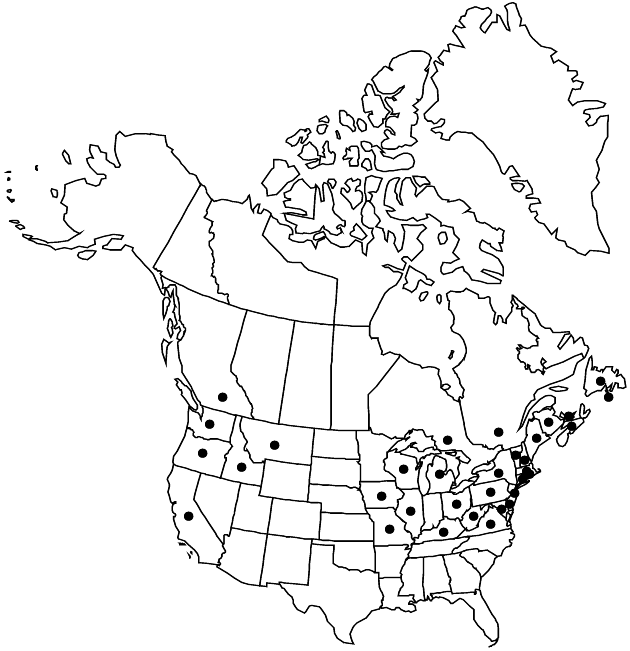Centaurea nigra
Sp. Pl. 2: 911. 1753.
Perennials, 30–150 cm. Stems 1–few, erect or ascending, openly branched distally, villous to scabrous with septate hairs and loosely tomentose, ± glabrate. Leaves: basal and proximal cauline petiolate, blades oblanceolate or elliptic, 5–25 cm, margins entire or shallowly dentate to irregularly pinnately lobed; distal cauline sessile, not decurrent, gradually smaller, blades linear to lanceolate, entire or dentate. Heads discoid, in few-headed corymbiform arrays, borne on leafy-bracted peduncles. Involucres ovoid to campanulate or hemispheric, 15–18 mm, usually ± as wide as high. Principal phyllaries: bodies lanceolate to ovate, loosely tomentose or glabrous, bases usually ± concealed by expanded appendages, appendages erect, overlapping, dark-brown to black, flat, margins pectinately dissected into numerous wiry lobes. Inner phyllaries: tips truncate, irregularly dentate or lobed. Florets 40–100+, all fertile; corollas purple (rarely white), 15–18 mm. Cypselae tan, 2.5–3 mm, finely hairy; pappi of many blackish, unequal, sometimes deciduous bristles 0.5–1 mm. 2n = 22, 44.
Phenology: Flowering summer–fall (Jun–Oct).
Habitat: Roadsides, fields, clearings, waste areas
Elevation: 0–300 m
Distribution

Introduced; St. Pierre and Miquelon, B.C., N.B., Nfld. and Labr. (Nfld.), N.S., Ont., P.E.I., Que., Calif., Conn., Del., Idaho, Ill., Iowa, Ky., Maine, Md., Mass., Mich., Mo., Mont., N.H., N.J., N.Y., Ohio, Oreg., Pa., R.I., Vt., Va., Wash., W.Va., Wis., Europe
Discussion
Black knapweed is listed as a noxious weed in Colorado and Washington.
Selected References
Lower Taxa
"glabrous" is not a number. "tomentose" is not a number."fine" is not a number."fine" is not a number.